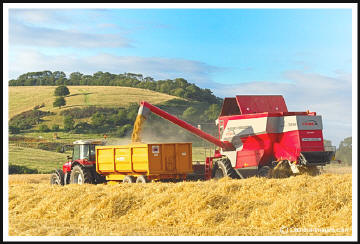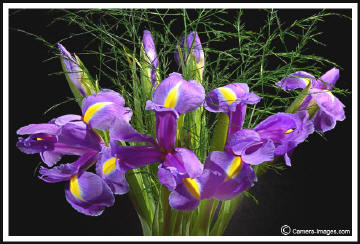|
Article
White
Balance
So what is white balance and why won’t auto white
balance do
| We all have a white balance setting on our DSLR cameras, but
many people ignore them, perhaps because they don’t understand what white
balance is or have not spotted how important it is in some situations. In the same way as you can leave the camera to work out
exposure, and focus, you can let it work out white balance, and like in the
case of exposure and focus, it makes a reasonable job of it much of the time. If
however we are going to use our DSLR as a heavy point and shoot camera, then we
cannot expect to get the quality of results that others can achieve. |
 
 Click on Image to see larger version
Click on Image to see larger version |
| There are those, including some professional photographers
who suggest auto white balance is all that you want, but its also these people
who tend to say things like ‘digital cameras can't photograph purple’ or purple
doesn’t exist in reality, or that digital cameras are unable to render colours
the way you remember it being. Others whose experience is primarily wildlife
photography or landscape, may have become used to the images they get and feel
they look right, in their style as you might say. Some may say its all an
illusion and as light changes there are no right colours. Some also restrict
taking photographs to a couple of hours after sunrise and a couple of ours
before sunset as that is the light they like. They may not have realised they
can get exactly the same light colour at any time of day. |
|
 
 Click on Image to see larger version
Click on Image to see larger version |
Others of us, however want to be able to photograph
bluebells and see them in the photographs, photograph a purple Iris and it to
print purple and to be able to see sunsets and other lighting conditions printed
as they appeared when taken.
Using RAW file format we can make many selections after the
event and most of the white balance settings can be selected later, so even if
you have taken photographs with the wrong white balance setting or with it on
auto you still have an opportunity to correct it. If you photograph in jpgs
then you have a computed picture and these changes later are not so easy to
make.
|
Auto white balance, mixes the colours in the image and then
tries to make it a neutral mix, so counteracting any strong cast. Unfortunately
if you happen to have a large amount of any colour it counteracts this as well.
Take a photo of a red rose close and it comes out pinkish, a yellow one a
straw colour and sunsets are largely cancelled out as are sheets of bluebells
through the woods.
Auto white balance is acceptable for general shots, scenic,
landscapes and quite a lot of wildlife.
There are those that will say they visit a place, take
photographs and by the time they get home they have forgot exactly what colours
buildings and the like were, so auto white balance is fine. Equally there are
those that will want everything at all times to be completely accurate, but for
most its often a mixture, some scenes we are happy to have auto white balance
colour, while where we see strong or dominant colours or the shot requires that
colours are accurate then we can get this.
To be able to get what you want when you want it, is not
difficult or complex, and in order to allow you to achieve this we have the
following articles:
|
|
To see perfect colours on
your screen you need to have a
colour managed
 and fully profiled screen. and fully profiled screen.
If you can't see perfect colours in the
images above then consider calibrating your screen.
Screens as they come are often higher
contrast and darker, being set to be ideal for office and word
processing applications. |
|
|